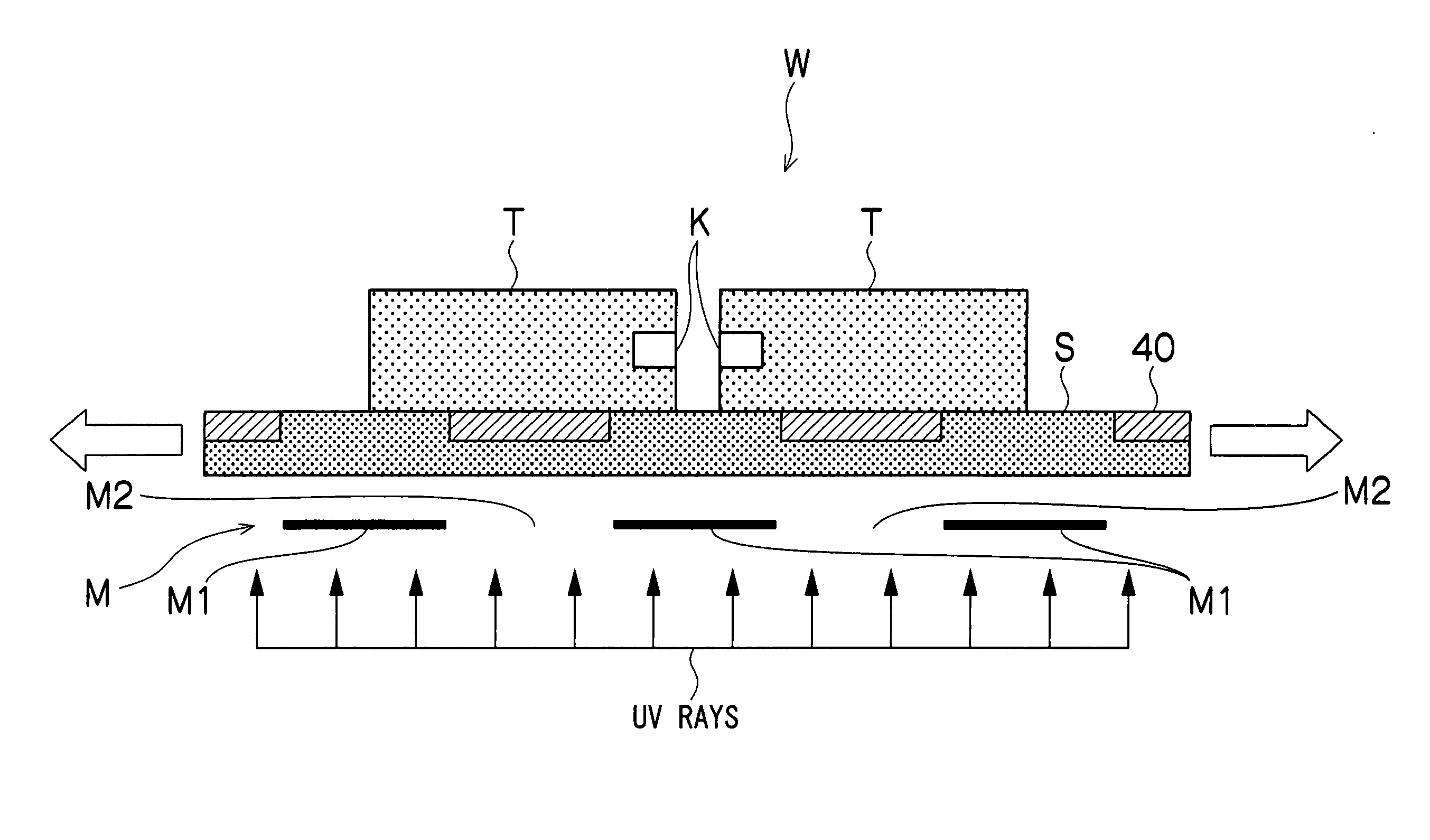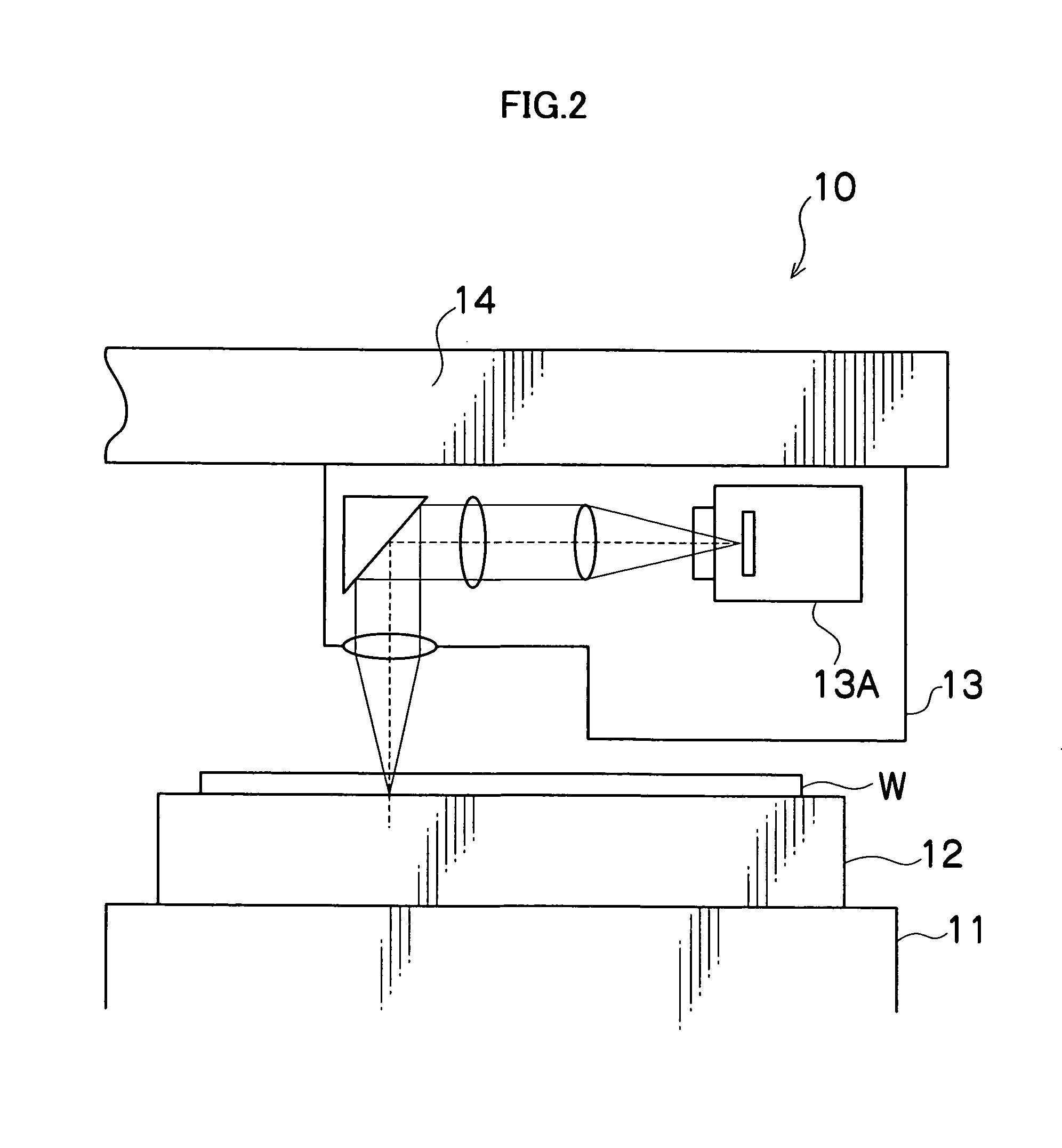Method and device or dividing plate-like member
a technology of a platelike member and a device, which is applied in the direction of metal working equipment, manufacturing tools, welding/soldering/cutting articles, etc., can solve the problems of increasing the cost of consumables, forming portions which are not divided, and good chips becoming defective products, etc., to achieve good end-face shape, simple construction of the apparatus, and positive manufacturing of ultrathin chips
- Summary
- Abstract
- Description
- Claims
- Application Information
AI Technical Summary
Benefits of technology
Problems solved by technology
Method used
Image
Examples
first embodiment
[0041] Subsequently, one chip in an expanded condition is pushed up from the dicing tape side and exfoliated from the dicing tape, this chip is sucked by a pickup head and sucked by a collet for chip mounting, with the front and back surfaces reversed, and the chip is mounted on a package substrate, such as a lead frame (Step S19). After the chip mounting step, the packaging step of wire bonding, molding, lead trimming and forming, marking, etc. is performed and an IC is completed. The foregoing is an outline of the
[0042] Next, details of the expanding step will be given. FIG. 3 is a conceptual diagram to explain the principle of a method for dividing a plate-like member related to the present invention, and FIG. 4 is a sectional view which shows an outline of the first embodiment.
[0043] As shown in FIG. 3, a modified region K formed by laser beams is present in the interior of a wafer W. As shown in FIG. 3, the tension applied to the wafer W on both sides of the modified region K ...
second embodiment
[0057] According to the above-described second embodiment, in the expanding step, due to the irradiation with the UV rays through the photomask M, the adhesion of the dicing tape S can be selectively reduced in the irradiated portion 30 and the expanding force of the dicing tape S can be efficiently transmitted as a dividing force to the wafer W all over the surface of the wafer W. As a result of this, it is possible to manufacture an ultrathin chip with a good end-face shape in which uncut portions, chipping and breakage do not occur when chips T are obtained by dividing the wafer W along the linear modified region K.
[0058] Incidentally, in the second embodiment, it is also possible to use a dicing tape S of high adhesion.
[0059] Next, the third embodiment related to the present invention will be described on the basis of FIG. 6. This third embodiment differs from the above-described first and second embodiments only in the expanding step. Therefore, detailed descriptions of other ...
PUM
| Property | Measurement | Unit |
|---|---|---|
| Brittleness | aaaaa | aaaaa |
| Tension | aaaaa | aaaaa |
Abstract
Description
Claims
Application Information
 Login to View More
Login to View More - R&D
- Intellectual Property
- Life Sciences
- Materials
- Tech Scout
- Unparalleled Data Quality
- Higher Quality Content
- 60% Fewer Hallucinations
Browse by: Latest US Patents, China's latest patents, Technical Efficacy Thesaurus, Application Domain, Technology Topic, Popular Technical Reports.
© 2025 PatSnap. All rights reserved.Legal|Privacy policy|Modern Slavery Act Transparency Statement|Sitemap|About US| Contact US: help@patsnap.com



